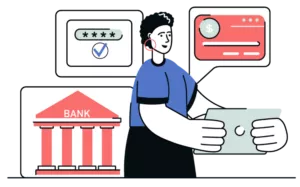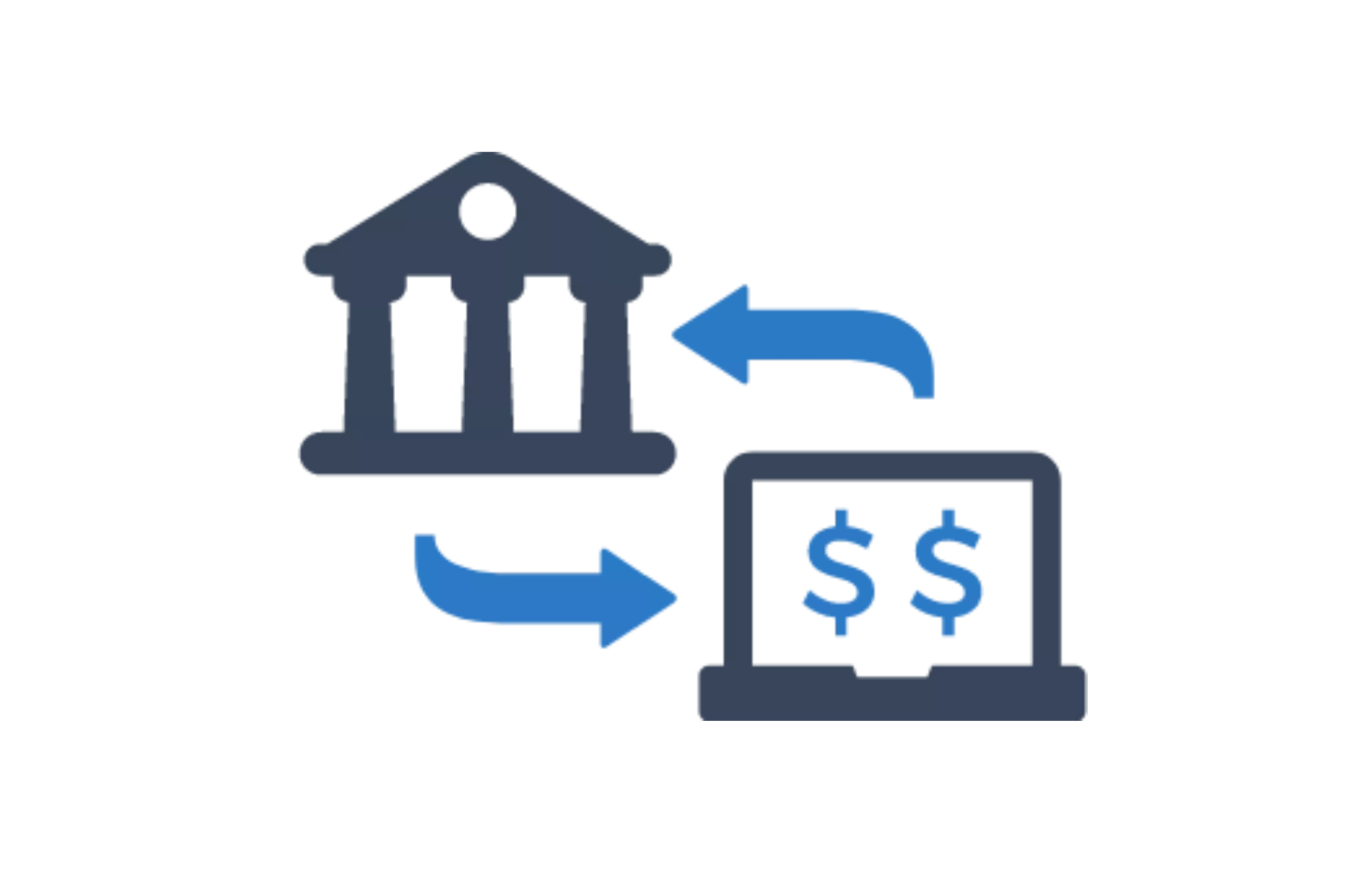
Automated Clearing House (ACH) payments can be split into two types: ACH credit transactions and ACH debit transactions. Currently, ACH payments are one of the most popular electronic payment methods, yet few realize that the umbrella term encompasses transaction types that slightly differ from one another. To help you become one of the few who truly grasp how ACH payments work, below explains what ACH credit and ACH debit transactions are—their differences, similarities, and how they process. Read on to reach a state of ACH enlightenment!
What Is ACH?
An acronym for the Automated Clearing House, “ACH” refers to an electronic network that facilitates payments between financial institutions within the United States. ACH payments are bank-to-bank electronic funds transfers (EFT) conducted through the ACH Network. Initiating a payment via the ACH Network requires both parties of the transaction to use the account numbers and routing numbers of the bank accounts.
Typically, ACH payments reach settlement within three to six business days. As the ACH Network’s governing body, the National Automated Clearing House Association (NACHA) ensures each transaction meets its standards. Transactions failing to meet NACHA’s standards reject and an ACH return code communicating the issue will show.
What Is ACH Credit?
In the event of an ACH credit payment, the payer—the bank account from which the funds are being drawn—initiates the payment. Basically, the payer sends funds into the payee’s account without the need for a request by the recipient. The most commonly occurring ACH credit transactions include payroll direct deposits and governmental benefit deposits.
How does ACH credit work?
To qualify as an ACH credit transaction, the payer must initiate the transaction. It might be helpful to think of ACH credit transactions as situations in which funds are pushed to the recipient, and ACH debit transactions as situations in which funds are pulled from the recipient.
What is an ACH credit refund?
In most cases, ACH credit transactions are final. However, there are some exceptions under which you may request a refund:
- If the amount of money is inaccurate.
- The settlement date is incorrect.
- There’s a duplicate deposit.
- If the money went to the wrong account.
What Is ACH Debit?
As a whole, ACH transactions are bank-to-bank money transfers, but the term can be further divided into ACH debit and ACH credit transactions. An ACH debit transaction occurs when the payee—the bank account to which the funds are being transferred—initiates the payment.
How does ACH debit work?
To qualify as an ACH debit transaction, the payee must request to receive money from the payer. Due to the speed with which they process, many United States-based businesses rely on initiating ACH debit payments from their customers every day. As a result, these are the most common type of ACH transactions.
Different types of ACH debit transactions
Issued to each ACH debit payment, the Standard Entry Class (SEC) code identifies the possible purpose of the ACH bank debit. Some codes are applicable to recurring payments, while others have limits to one-time payments. Below is a comprehensive list of the SEC codes:
| SEC | ACH Debit Name |
| ARC | Accounts Receivable Conversion |
| BOC | Back Office Conversion |
| CCD | Cash Concentration or Disbursement |
| CTX | Corporate Trade Exchange |
| IAT | International ACH Transaction |
| MTE | Machine Transfer Entry |
| POP | Point of Purchase |
| SEC | ACH Debit Name |
| POS | Point of Sale |
| PDD | Prearranged Payment and Deposits |
| RCK | Represented Check Entry |
| SHR | Shared Network Transaction |
| TEL | Telephone Initiated Entry |
| TRC/TRX | Check Truncation |
| WEB | Internet Initiated Entry |

ACH debit vs eCheck
An electronic check (Check) is, essentially, a digitalized version of paying with a traditional check. Notably, eCheck settlement does not require a merchant account. As a result, eChecks are a viable payment option for high-risk merchants having difficulty obtaining a merchant account.
The major difference between eChecks and ACH debit payments is who initiates the transaction. The former is initiated by the payer and the latter by the payee. Additionally, ACH debit transactions typically reach settlement faster and incur lower processing fees.
Note: For more information about the differences between eChecks and ACH payments, refer to our ACH vs. eCheck breakdown.

ACH debit vs direct deposit
The term “direct deposits” refers to payments made through the ACH network. As a general rule, all ACH payments fall into one of two categories: direct deposits and direct payments. In the case of ACH debit transfers, they’re direct payments.
ACH Debit vs ACH Credit
The main difference between these types of transactions lies in the initiator. ACH credit transactions are initiated by the sender of funds. On the other hand, ACH debit transactions are initiated by the recipient of the funds.
How Long Do ACH Credit and Debit Transfers Take?
How long a specific ACH transfer takes to reach a settlement depends on the bank(s) involved. The time at which a transfer was initiated is also a factor. That said, credits typically take from one to two business days to go through, whereas debits take from three to six business days.
ACH Credit vs ACH Debit Fees
Below is a list of ACH processing fees at the top 10 United States banks:
| Bank | ACH Transaction Fees | Processing Time |
| Bank of America | $0 for inbound transfers $3 for standard delivery $10 for next-day delivery | 3 business days |
| BB&T | $0 for inbound transfers $3 for outbound standard delivery $10 for outbound next-day delivery | 3 business days |
| BBVA Compass | $0 for inbound transfers $3 for outbound standard delivery | 1-3 business days |
| Citizen’s Bank | $3 for standard delivery transfers $10 for next-business-day delivery | 1-3 business days |
| BMO Harris | $0 | 2-3 business days |
| Capital One | $0 | 2-3 business days |
| Fifth Third Bank | $3 for standard delivery transfers | 1-3 business days |
| Chase | $0 | 1-3 business days |
| SunTrust | $0 for inbound transfers $3 for outbound standard delivery $6 for outbound next-business-day delivery | 3 business days |
| U.S. Bank | $0 for inbound transfers $3 for standard delivery | 3 business days |
Are ACH Credits and ACH Debits Here to Stay?
NACHA reports there were 12.74 billion ACH credit transfers in 2021—almost double the 6.96 billion in 2012. The number of ACH debit transfers has also significantly increased in recent years. In 2021, there were 16.37 billion ACH debit transactions, up from 9.79 billion in 2012.[1]NACHA. “The economy moves through ACH“. Accessed October 7, 2022.
Is ACH Debit or Credit Better for Your Business?
When utilized correctly, your business can benefit from both debit and credit ACH transactions. Before opting for an ACH payment, consider these factors:
- ACH requires a U.S. bank account
- International transactions aren’t available via ACH
- ACH is cheaper than most traditional payment methods
- ACH allows recurring payments
- Consumers cannot earn reward points through ACH
ACH Credit vs ACH Debit: Final Thoughts
Now that you understand the difference between ACH debit and credit transactions, you can officially say you’ve reached a state of ACH enlightenment. (Just remember, if the payer pushes funds to the payee, it’s an ACH credit, and if the payee pulls funds from the payer, it’s an ACH debit.) However, it doesn’t take a state of enlightenment to realize just how advantageous it is to accept ACH payments at your business. With lower processing fees and quicker processing times, ACH payments offer merchants the means to make more money faster.







